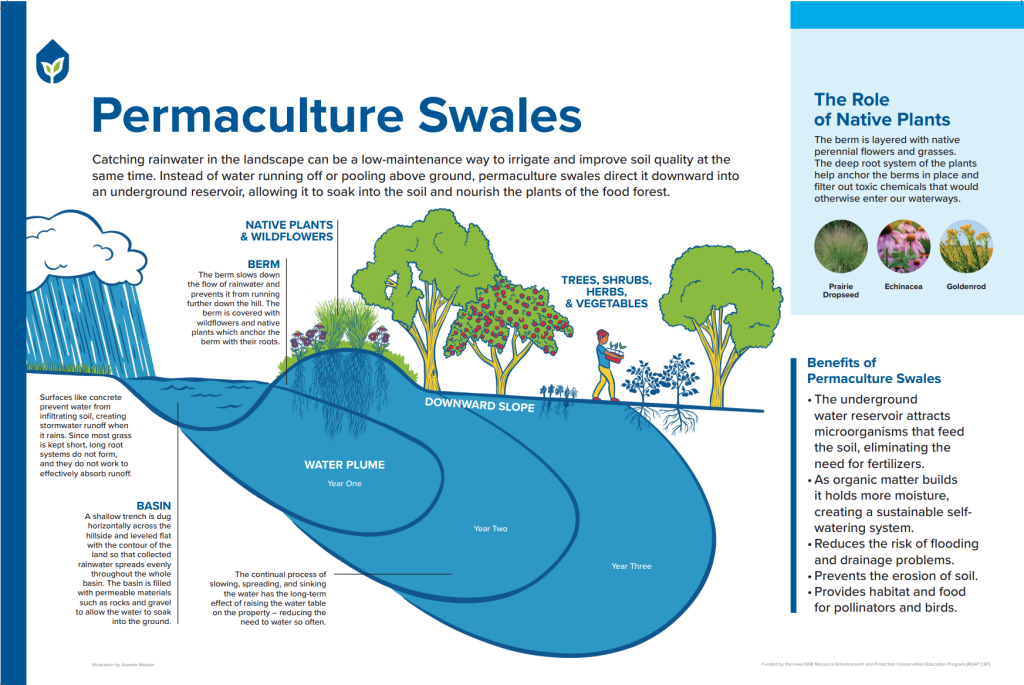Permaculture Swales

This sign reads: “Permaculture swales. Catching rainwater in the landscape can be a low-maintenance way to irrigate and improve soil quality at the same time. Instead of water running off or pooling above ground, permaculture swales direct it downward into an underground reservoir, allowing it to soak into the soil and nourish the plants of the food forest.
Benefits of permaculture swales. The underground water reservoir attracts microorganisms that feed the soil, eliminating the need for fertilizers. As organic matter builds it holds more moisture, creating a sustainable self-watering system. Reduces the risk of flooding and drainage problems. Prevents the erosion of soil. Provides habitat and food for pollinators and birds.”
The middle of the sign features a drawing of the permaculture swales in the food forest. As rain falls on the left side of the drawing, it collects in the basin formed by a berm. A berm is a mound covered in native plants that have deep roots. The area to the right of the berm has a downward slope and features a variety of trees, shrubs, herbs, and vegetables. Underground, a water plume is shown expanding from the basin site. The water plume expands to the right for three consecutive years.
From left to right, the drawing is labeled as follows: “Surfaces like concrete prevent water from infiltrating soil, creating stormwater runoff when it rains. Since most grass is kept short, long root systems do not form, and they do not work to effectively absorb runoff.
Basin. A shallow trench is dug horizontally across the hillside and leveled flat with the contour of the land so that collected rainwater spreads evenly throughout the whole basin. The basin is filled with permeable materials such as rocks and gravel to allow the water to soak into the ground.
Berm. The berm slows down the flow of rainwater and prevents it from running further down the hill. The berm is covered with wildflowers and native plants which anchor the berm with their roots.
Water plume. The continual process of slowing, spreading, and sinking the water has the long-term effect of raising the water table on the property – reducing the need to water so often.”
The right side of the sign features a blue box that reads: “The role of native plants. The berm is layered with native perennial flowers and grasses. The deep root system of the plants help anchor the berm in place and filter out toxic chemicals that would otherwise enter our waterways. There are three images of plants: the prairie dropseed, a tall grass, echinacea, a small pink flower, and goldenrod, a tall plant with clusters of small yellow flowers.
